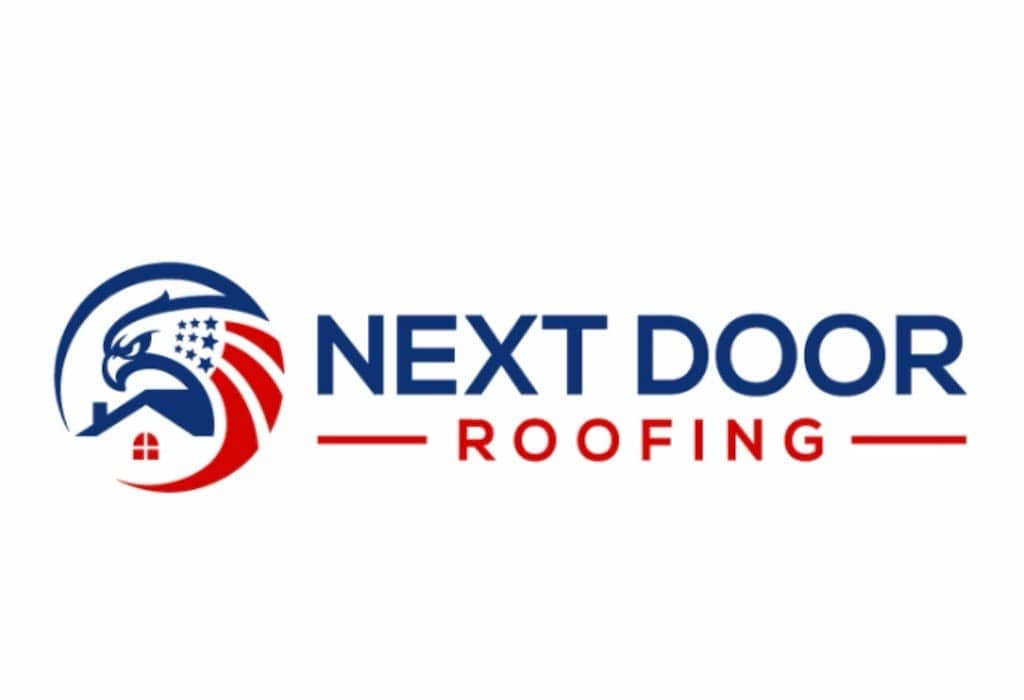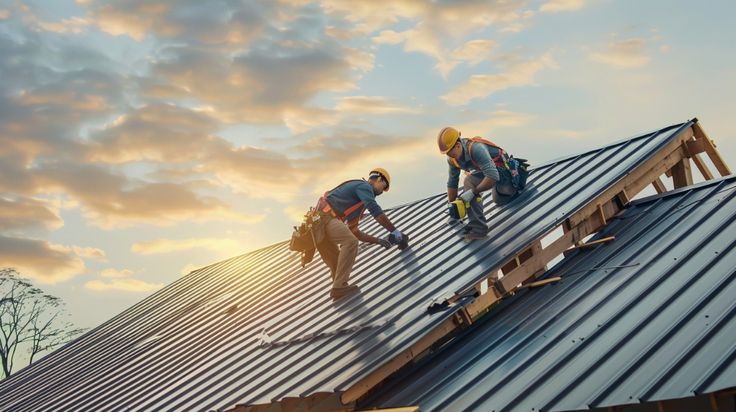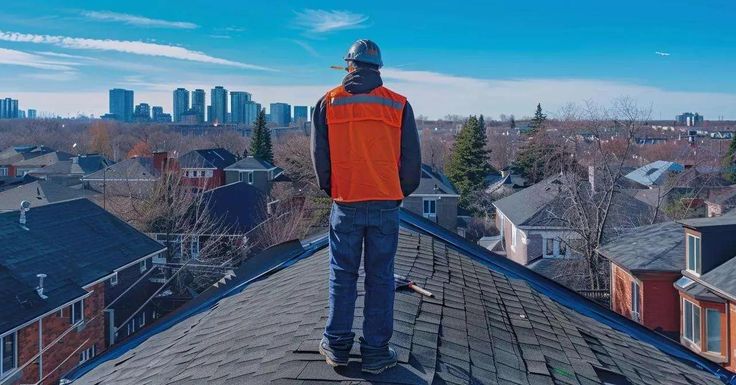Tile roof Maintenance are a classic choice for homeowners across Texas especially in areas like Dallas, Fort Worth, and surrounding communities because they combine durability, beauty, and energy efficiency. But no matter how tough tile roofs are, they still need consistent maintenance to stay in top condition. Without regular care, even the strongest clay or concrete tiles can crack, loosen, or allow water to seep underneath, leading to costly repairs down the line.
In this guide, we’ll cover everything you need to know about tile roof maintenance from why it matters, what steps are involved, how often it should be done, and why hiring professionals like Next Door Roofing can save you time, money, and stress.
Why Tile Roof Maintenance Matters
Tile roofs have a well‑deserved reputation for longevity many can last 50 years or more, especially when installed correctly. But this long life expectancy doesn’t mean homeowners can simply forget about them. In reality, regular tile roof maintenance is the key factor that determines whether your roof will reach its full lifespan or begin deteriorating far sooner than expected.
When you maintain your tile roof, you’re not just preserving its beauty you’re protecting the structure of your entire home. Here’s why ongoing upkeep is so critical:
Prevents Costly Repairs
Small cracks or tiles that are slightly out of place may not seem serious at first, but they can allow water to get under the roof. If water gets to the underlayment or the decking, fixing it becomes much more costly. Checking your roof often and fixing small problems early helps prevent big water damage and expensive repairs to the structure.
Extends Roof Lifespan
Tile roofs are strong and long-lasting, but the materials underneath the tiles, especially the underlayment, are more likely to get damaged by water and sunlight. Regular checks and cleaning help keep dirt and debris away, making sure water flows off the roof properly. This helps all parts of the roof stay in good condition for a longer time.
Protects Curb Appeal
A roof made of tiles that has gotten dirty with dirt, algae, or moss can make even a nicely maintained house look run-down. Cleaning it regularly helps bring back the roof’s original color and keeps its nice appearance, which adds to the value of your home. In Texas real estate, how a house looks from the outside can really affect its price and how interested buyers are.
Maintains Energy Efficiency
Intact tile roofs help insulate the house by reflecting sunlight, which keeps the attic cooler during hot Texas summers. If the tiles are cracked or missing, this insulation effect is lost, causing the house to heat up more and increasing the cost of cooling.
Preserves Roofing Warranty
Many roofing manufacturers and insurance providers require documented maintenance to keep warranties valid. Skipping regular care could mean losing coverage when you need it most particularly after a hailstorm or high‑wind event common in Texas.
Understanding Tile Roofs | Clay vs. Concrete
Before diving into maintenance tips, it’s helpful to understand the two most common tile materials:
- Clay tiles: Known for their rich color and long lifespan, clay tiles are highly durable but more fragile if walked on.
- Concrete tiles: Heavier than clay, concrete tiles are cost-effective and extremely tough but still require regular inspection to prevent surface wear.
Both types need similar care, though cleaning methods and repair techniques may vary slightly.
Common Tile Roof Problems in Texas
Tile roofing is one of the strongest choices for homeowners in Texas. It can handle hot weather, fires, and heavy rain, which is why it’s commonly used in places like Dallas, Fort Worth, and nearby areas. However, even the most durable tile roofs can have problems because of Texas’ tough climate. Extreme heat, sudden hail, strong winds, and high humidity all cause damage over time. At Next Door Roofing, we’ve encountered almost every kind of tile roof issue. The earlier you catch these problems, the cheaper it is to fix them.
Below are the most common problems Texas homeowners encounter with their tile roofs:
Cracked or Broken Tiles
What causes it?
- Hailstorms are a major culprit; Texas hail can strike hard enough to chip or crack clay and even concrete tiles.
- Falling debris like tree branches during storms can fracture individual tiles.
- Foot traffic on the roof whether from DIY inspections or other contractors can also cause breakage if tiles are stepped on incorrectly.
Why it matters:
Even a single cracked tile can expose the underlayment to water infiltration. Left unaddressed, this moisture can rot the roof decking and cause leaks inside your home.
Solution:
Cracked tiles should be replaced promptly by a professional who can carefully lift adjacent tiles without causing further damage.
2. Slipped or Loose Tiles
What causes it?
Texas is no stranger to high winds, especially during spring storms and hurricane remnants. These winds can loosen tiles or cause them to slide out of alignment. Improper installation can also contribute to slippage over time.
Why it matters:
Loose tiles create gaps where rain can enter, undermining the roof’s waterproofing. They can also pose a safety risk if they slide completely off the roof.
Solution:
Regular inspections as part of routine tile roof maintenance help identify loose tiles early. Securing or reattaching them prevents leaks and further displacement during future storms.
3. Damaged Underlayment
What causes it?
While tiles themselves can last decades, the underlayment the waterproof barrier beneath the tiles typically lasts 20–30 years. Prolonged heat, UV exposure, or water intrusion from broken tiles can accelerate its deterioration.
Why it matters:
Once underlayment fails, your home is vulnerable to significant water damage, even if the tiles appear intact from the outside.
Solution:
A professional inspection can determine the underlayment’s condition. If it’s nearing the end of its life, partial or full replacement may be recommended to prevent widespread leaks.
4. Moss and Algae Growth
What causes it?
Texas’ humidity, particularly in shaded areas of the roof, creates the perfect environment for moss and algae to grow. These organisms thrive on damp surfaces, especially where debris has accumulated.
Why it matters:
Moss retains moisture against the tile surface, which can lead to deterioration over time. It also lifts tiles slightly, allowing water to seep beneath them. Algae, while mostly cosmetic, can make your roof look streaked and dirty.
Solution:
Professional cleaning and the application of preventative treatments help control moss and algae. Avoid harsh chemicals or high‑pressure washing, which can damage tile surfaces.
5. Clogged Gutters and Valleys
What causes it?
Falling leaves, pine needles, and storm debris frequently collect in roof valleys and gutters. If not cleared, these blockages trap water and force it back under the roof tiles.
Why it matters:
Standing water accelerates underlayment deterioration and can lead to leaks along roof edges. Overflowing gutters may also damage fascia boards and exterior siding.
Solution:
As part of routine tile roof maintenance, gutters should be cleaned at least twice a year ideally in spring and fall and after severe weather events.
6. Flashing Failures
What causes it?
Flashing the metal strips that seal areas around chimneys, vents, and skylights can corrode, warp, or detach due to age, temperature changes, and wind uplift.
Why it matters:
Flashing failures are one of the most common sources of roof leaks. Even if tiles are intact, compromised flashing allows water to enter vulnerable seams and joints.
Solution:
During professional inspections, roofers check all flashing points and reseal or replace as needed. Proactive flashing maintenance prevents water intrusion at these critical areas.
Why Early Detection Matters
Identifying these common issues early can save Texas homeowners thousands in repair costs. A cracked tile replaced promptly is a quick fix; ignored, it can lead to widespread water damage, mold growth, and even structural rot. That’s why Next Door Roofing recommends scheduling annual tile roof inspections and after every major storm to stay ahead of problems.
How Often Should You Perform Tile Roof Maintenance?
A general rule for tile roof maintenance is:
- Visual inspections: Twice a year (spring and fall) and after major storms.
- Professional inspections: Annually, or immediately after hail/wind events.
- Cleaning: Every 2–3 years, or as needed depending on algae/moss growth.
- Repairs: Address issues immediately; don’t wait until they worsen.
Texas homeowners should be especially vigilant after hailstorms, which can cause unseen tile fractures.
Step-by-Step Tile Roof Maintenance
Here’s what a thorough maintenance plan looks like:
1. Regular Inspections
Start with a ground-level visual check. Look for cracked, missing, or displaced tiles, sagging rooflines, or visible debris. Avoid walking on the tiles yourself they can crack under weight.
Professional inspections by Next Door Roofing include climbing onto the roof (with safety gear), checking flashing, underlayment, and ridge caps, and assessing storm damage.
2. Cleaning the Roof
Tile roofs accumulate dirt, algae, and moss over time. Proper cleaning involves:
- Low-pressure washing: High-pressure can damage tiles; professionals use soft washing.
- Moss/algae treatments – Safe chemical solutions prevent regrowth.
- Debris removal – Clearing leaves from valleys and gutters to prevent water pooling.
Pro Tip: Never use harsh wire brushes or bleach these can erode tiles.
3. Replacing or Repairing Damaged Tiles
Cracked or missing tiles should be replaced immediately. Leaving them open exposes the underlayment to sun and water, accelerating deterioration.
Tile replacement involves carefully lifting surrounding tiles, replacing the broken piece, and resecuring it without damaging adjacent areas. This is a skill best left to pros.
4. Checking Flashing and Sealants
Flashing around chimneys, vents, and skylights is critical to prevent leaks. Over time, sealant can dry out or metal flashing can corrode. Annual maintenance includes resealing and tightening these areas.
5. Gutter and Downspout Maintenance
Clogged gutters cause water backup that damages tile edges and fascia boards. Cleaning gutters at least twice a year is essential.
6. Addressing Underlayment Health
Even if tiles look perfect, the underlayment (waterproof barrier) may degrade after 20–30 years. Inspecting and replacing underlayment is part of long-term tile roof maintenance and often coincides with major reroofing projects.
Cost of Tile Roof Maintenance in Texas
Costs vary based on roof size, tile type, and extent of cleaning/repairs:
- Annual inspection: $150–$300
- Basic cleaning: $400–$800
- Tile replacement: $10–$20 per tile (plus labor)
- Full underlayment replacement: $3–$6 per sq. ft.
Regular upkeep is far cheaper than replacing an entire roof early due to neglect.
How Next Door Roofing Can Help
When it comes to tile roof maintenance in Texas, not every roofing company has the right experience. Tile roofing requires specialized knowledge from safely walking on the tiles without causing damage, to identifying subtle underlayment issues that other roofers might miss. At Next Door Roofing, tile roofs are one of our core specialties, and we’ve built our reputation on delivering high‑quality service with honest guidance for homeowners throughout Texas.
Specialized Tile Roof Maintenance Programs
We offer comprehensive maintenance plans designed to keep your roof in peak condition year‑round. Depending on your needs, we can schedule annual or biannual inspections that include:
- Checking for cracked, loose, or missing tiles
- Examining underlayment and flashing for hidden issues
- Clearing roof valleys and gutters of debris
- Identifying moss or algae growth early
- Providing a full condition report with photos and recommendations
These programs ensure you’re always ahead of potential problems and help maintain any manufacturer or workmanship warranties on your roof.
Emergency Storm Damage Repairs
Texas weather is unpredictable hailstorms, high winds, and heavy rains can strike without warning. Our team provides emergency repair services to address urgent tile damage and prevent further water intrusion. We work quickly to assess the situation, perform immediate protective measures (like tarping), and restore your roof to its original condition as soon as possible.
Expertise in Clay and Concrete Tiles
Not all tile roofs are the same. Clay tiles are traditional and beautiful, while concrete tiles are heavy and extremely durable. Our technicians are trained in both materials, understanding their unique installation and maintenance requirements. Whether your home features classic barrel clay tiles or modern flat concrete tiles, we ensure repairs and replacements match seamlessly in color and profile.
Eco-Friendly Cleaning and Moss Removal
A clean roof isn’t just about curb appeal removing moss, algae, and debris prevents water retention and long‑term damage. At Next Door Roofing, we use eco-friendly cleaning solutions that are safe for your family, landscaping, and pets. Our cleaning methods are gentle yet effective, avoiding high‑pressure washing that can crack tiles or strip protective coatings.
Underlayment Assessments and Replacements
While roof tiles provide the first line of defense, the underlayment is what truly keeps water out of your home. Over time, Texas heat and weather cycles can break down this critical layer. During every maintenance visit, we carefully evaluate underlayment integrity and, when needed, recommend targeted repairs or full replacement to prevent leaks before they happen.
Frequently Asked Questions (FAQs)
1. How long do tile roofs last in Texas?
With proper maintenance, clay and concrete tile roofs can last 50 years or more often outlasting the underlayment, which may need replacement after 20–30 years.
2. Can walking on my tile roof damage it?
Yes. Tile roofs can crack under weight, especially clay tiles. Always hire professionals with proper equipment.
3. How do I know if my tile roof needs cleaning?
Visible moss, algae streaks, or accumulated dirt are signs it’s time for professional cleaning.
4. Is tile roof maintenance expensive?
Routine maintenance is affordable compared to major repairs or replacements. Annual inspections and occasional cleaning are small investments to protect your home.
5. Does hail damage tile roofs?
Yes, Texas hailstorms can crack tiles or chip surfaces. Always schedule an inspection after severe weather.
6. Can I pressure wash my tile roof?
High-pressure washing can erode tile surfaces and force water under tiles. Soft washing is safer and recommended.
7. Do tile roofs require more maintenance than shingles?
Tile roofs require less frequent replacement but still need inspections and cleaning to protect underlayment and flashing.
Conclusion:
Tile roofs are one of the most durable and attractive roofing options for Texas homeowners but they aren’t maintenance-free. Consistent tile roof maintenance ensures your investment lasts for decades, resists storm damage, and keeps your home energy-efficient and beautiful.
If you’re overdue for an inspection or notice cracked or missing tiles, Next Door Roofing is here to help. Our team provides expert maintenance, repairs, and honest advice tailored to your home’s needs.
Contact Next Door Roofing
At Next Door Roofing, we’re here to help with inspections, repairs, replacements, and emergency services whenever you need us.
Contact us today to schedule your free roof inspection or get a detailed estimate:
- Website: www.nextdoorroofing.net
- Phone: (714) 551-0337)
- Email: (info@nextdoorroofing.net)
- Address: (Next Door Roofing, Inc. 1176 N Knollwood Circle Anaheim, CA 92801)
We’re committed to making your roofing project stress‑free from start to finish because when you hire local, you hire neighbors who care.





